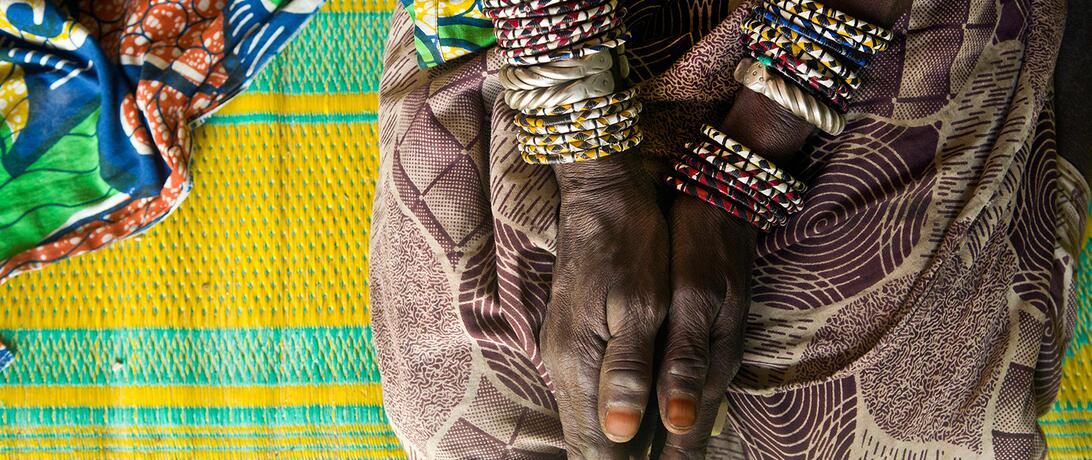
In November 2017, the bodies of 26 Nigerian women were found adrift off the coast of Italy. They were thought to be part of a contingent of trafficked women destined to work in Italy’s notorious sex trade industry.
This is the fourth post in a series on understanding the dynamics of migration on land and sea.
Organized criminal groups operate across multiple country jurisdictions and play an important role in movement of people across borders. Often, unrealistic promises are made and coercionary tactics are used to lure migrants away from home to a life that simply does not exist.
The UN Refugee Agency estimates that 171,635 migrants reached European shores in 2017, significantly down from the 363, 504 arrivals in 2016. The reasons for migrants attempting this treacherous voyage are numerous and complex; ranging from searching for better economic opportunities, to fleeing war, violence, and famine.
But 2017 was also one of the deadliest years for migrants crossing the Mediterranean with more than 3,100 migrants reported dead or missing. Since 2000, more than 33,000 migrants have died while attempting to cross the Mediterranean to Europe.
Nigerians crossing the Mediterranean
In November 2017, the bodies of 26 Nigerian women were found adrift off the coast of Italy. They were thought to be part of a contingent of trafficked women destined to work in Italy’s notorious sex trade industry.
The International Organization for Migration has recently shown that 37 percent of migrants travelling from North Africa to Europe had experienced “human trafficking or other exploitative practices” along this route. The report also found that West Africans were disproportionately vulnerable to exploitative practices when compared to North Africans, Afghanis or Syrians, with discrimination and racism highlighted as causal factors for this treatment.
Nigeria has historically sent migrants to service Italy’s farming sector as migrant labor. Many migrants were lured into the more lucrative sex industry. Up until the early 2000s the preferred method for trafficking Nigerian women into Europe was by air. This has since changed. Now Nigeria stands out as the country with the greatest flow of trans-Mediterranean migrants from Africa, and third globally, behind Syria and Afghanistan, countries in a state of war.
Nigerians accounted for 10 percent of all women trafficked to Western and Central Europe between 2007 and 2012, making them “the most prominent transregional flow in this region,” according to the UN Office on Drugs and Crime (UNODC).
More Nigerians arrive in Italy than any other nationality and they comprise of approximately half of the sex workers in the country. Although women only comprise 10 percent of the total number of Nigerian migrants, it is estimated that 80 percent or approximately 9,000 Nigerian women in 2016 were trafficked to Italy for its sex industry.
Costs of the voyage
Recruiting women from Nigeria is a complex and highly coordinated process. There are local chapters of the criminal syndicates operating in Nigeria that are tasked with recruiting vulnerable women often who are desperate for a better life abroad.
Prior to departure, the women are forced to undertake a ritualized promissory juju oath that ensures upon arrival in Europe they will re-pay the debt of their voyage. Juju, like voodoo, is strongly held belief in Nigeria. It instils in individuals a fear of dire consequences if they break an oath. It has also been reported that the women’s belief in juju has stifled law enforcement efforts to investigate and apprehend traffickers.
Over 85 percent of human trafficking from Nigeria involves treacherous overland routes through the Sahara. The women are charged between 40,000 to 70,000 Euros for the voyage which starts overland from Nigeria, often taking months to reach Libya. Often along the trafficking route women are kept in “safehouses” for months at a time while fraudulent travel documents are prepared for their passage into Europe. Life for these women becomes a living nightmare. They are routinely raped, beaten and threatened with death.
Upon arrival in the transit country, the trafficked women are loaded onto often unseaworthy vessels headed for Europe. The preferred sea trafficking routes are from Nigeria overland through Niger to Libya and then on to Sicily. Other routes include the Western Sahara to the Canary Islands or to Morocco, and then to Spain; or from Senegal to Cabo Verde onwards to Spain.
Organized crime
Once the women make it ashore in Europe they are quickly and forcibly introduced to a life of prostitution and exploitation. Under the control of Nigerian gangs in Italy, they sell their bodies for as little as 20 Euros in an effort to pay off the 40,000 to 70,000 Euros debt incurred from the cost of their voyage. Unsuspecting women living in refugee camps are also recruited into the sex trade business by madams who are affiliated to the gangs.
Critics have noted a significant effect from human trafficking on Italy’s criminal economy. There is high degree of collaboration between the Italian mafia and Nigerian criminal syndicates, such as the Black Axe and the Vikings groups. The Cosa Nostra extracts a tax from Nigerian gang members who operate in territories under their jurisdiction. Tension and conflict between the competing factions are expected to escalate. At stake is the control over the profits from trans-Mediterranean illicit trade in women and narcotics, particularly heroin and cocaine, trafficked via Libya to Italian shores.
For the Nigerian women that reach European shores, the prospects of a better life remain illusory at best. Their reality is a future of indentured misery and exploitation.
---
This blog post is part of a series on maritime mixed migration. Check back next week for the next installment.
Article Details
Published
Topic
Program
Content Type
Opinion & Insights